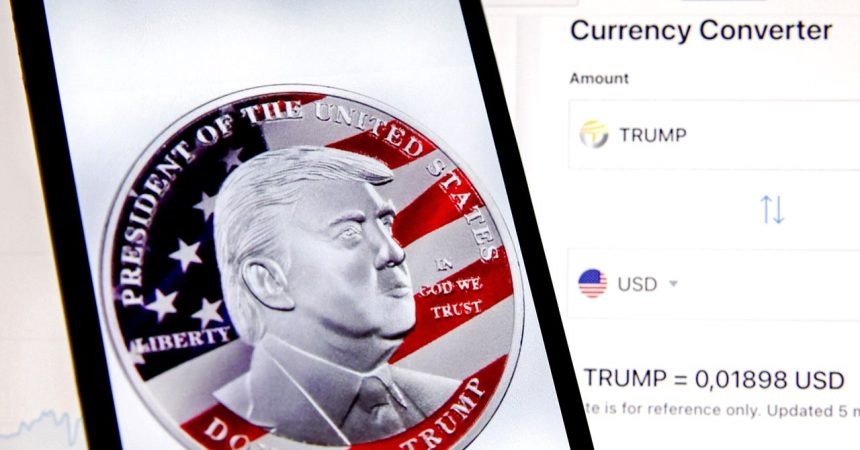The meteoric rise and fall of the TRUMP memecoin, launched on January 18th, presents a fascinating case study in the volatile world of cryptocurrency. Nansen analysis reveals a stark contrast between the timing of large investments and maximum profit realization. The largest initial investments poured in on the launch day itself, suggesting a coordinated effort or insider knowledge. However, those who reaped the greatest returns strategically exited their positions by January 20th, capitalizing on the initial price surge before the inevitable correction. This rapid turnaround suggests an understanding of the speculative and often fleeting nature of memecoins, where early adoption and swift exit strategies can yield substantial, albeit risky, profits. The current valuation of circulating TRUMP coins, standing at $5.4 billion, underscores the sheer volume of capital injected into this speculative asset within a remarkably short timeframe.
While large investors dominated the initial trading frenzy, Nansen data also reveals the participation of smaller players who managed to time the market and secure significant gains. Alongside the high-value trades executed by prominent wallets like J9tXv, numerous smaller investors, perhaps driven by FOMO (fear of missing out) or a genuine belief in the coin’s potential, also entered the fray, investing modest sums. This dynamic highlights the accessibility of memecoins and the potential for even small-scale traders to capitalize on market fluctuations. However, it also underscores the inherent risks associated with such volatile assets, where substantial losses are just as likely as significant gains. The success stories of small-time TRUMP traders likely represent a combination of luck, astute timing, and perhaps, a healthy dose of risk tolerance.
The extraordinary speed and precision of the large initial investments raise suspicions about the involvement of automated trading bots, specifically designed to “snipe” newly launched coins. These bots are programmed to identify and purchase new cryptocurrencies immediately upon release, often in small denominations across a diversified portfolio. However, the TRUMP trading patterns, particularly the large, concentrated investments made within minutes of launch, deviate from typical bot behavior. The focused acquisition of large volumes of a single, unannounced token suggests a level of preemptive knowledge that is difficult to reconcile with automated trading strategies. This raises the possibility of insider trading or preferential access to information, practices that would raise serious ethical and legal concerns.
The lack of clear regulatory frameworks governing memecoins in the US further complicates the situation. While some argue that memecoins should be subject to securities laws enforced by the SEC, others, including figures appointed by Donald Trump himself, advocate for classifying them as collectibles, which fall outside existing regulations. This regulatory ambiguity creates a gray area that can be exploited by unscrupulous actors. The TRUMP memecoin’s terms and conditions, which include waivers of class-action lawsuits and disclaimers regarding investment opportunities, further highlight this lack of oversight. These protective measures, designed to shield the issuers from legal repercussions, raise serious questions about the ethical implications of operating within such a loosely regulated environment.
The TRUMP memecoin saga highlights the growing pains of the cryptocurrency industry, caught between the desire for innovation and the need for robust regulation. The industry is grappling with its image and seeking to establish itself as a legitimate player in the financial world. However, incidents like the TRUMP coin launch, with its opaque trading patterns, questionable disclaimers, and regulatory ambiguity, undermine these efforts. The lack of transparency and the potential for manipulation erode trust and raise concerns about the long-term viability and sustainability of the cryptocurrency market.
The call for regulatory clarity within the cryptocurrency industry is becoming increasingly urgent. The TRUMP memecoin case serves as a stark reminder of the potential for exploitation and the need for clear guidelines to protect investors. Whether memecoins are ultimately classified as securities or collectibles, the need for transparent practices, ethical conduct, and robust investor protections cannot be overstated. The future of the cryptocurrency industry hinges on its ability to address these concerns and build a regulatory framework that fosters trust, promotes innovation, and safeguards the interests of all market participants.



